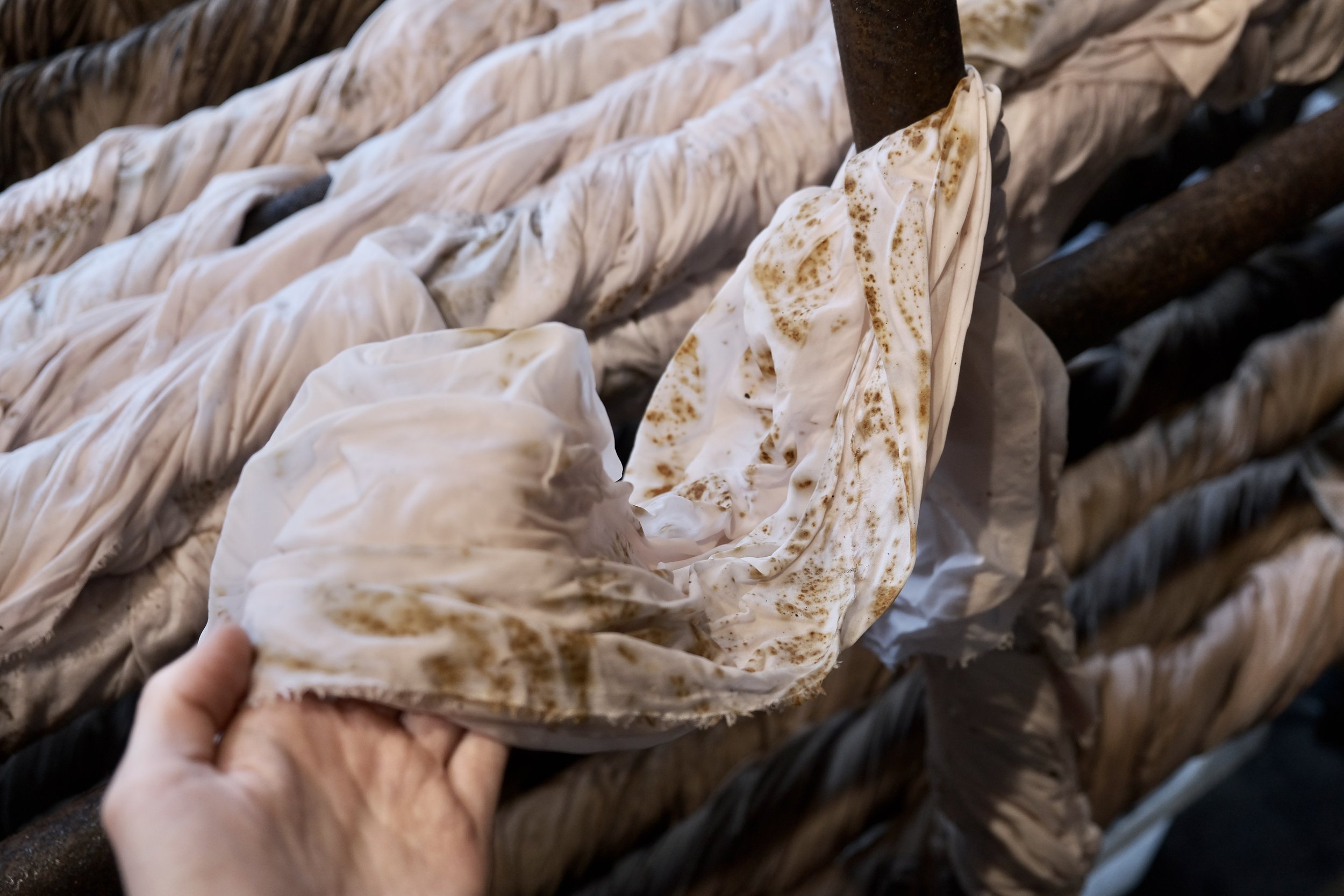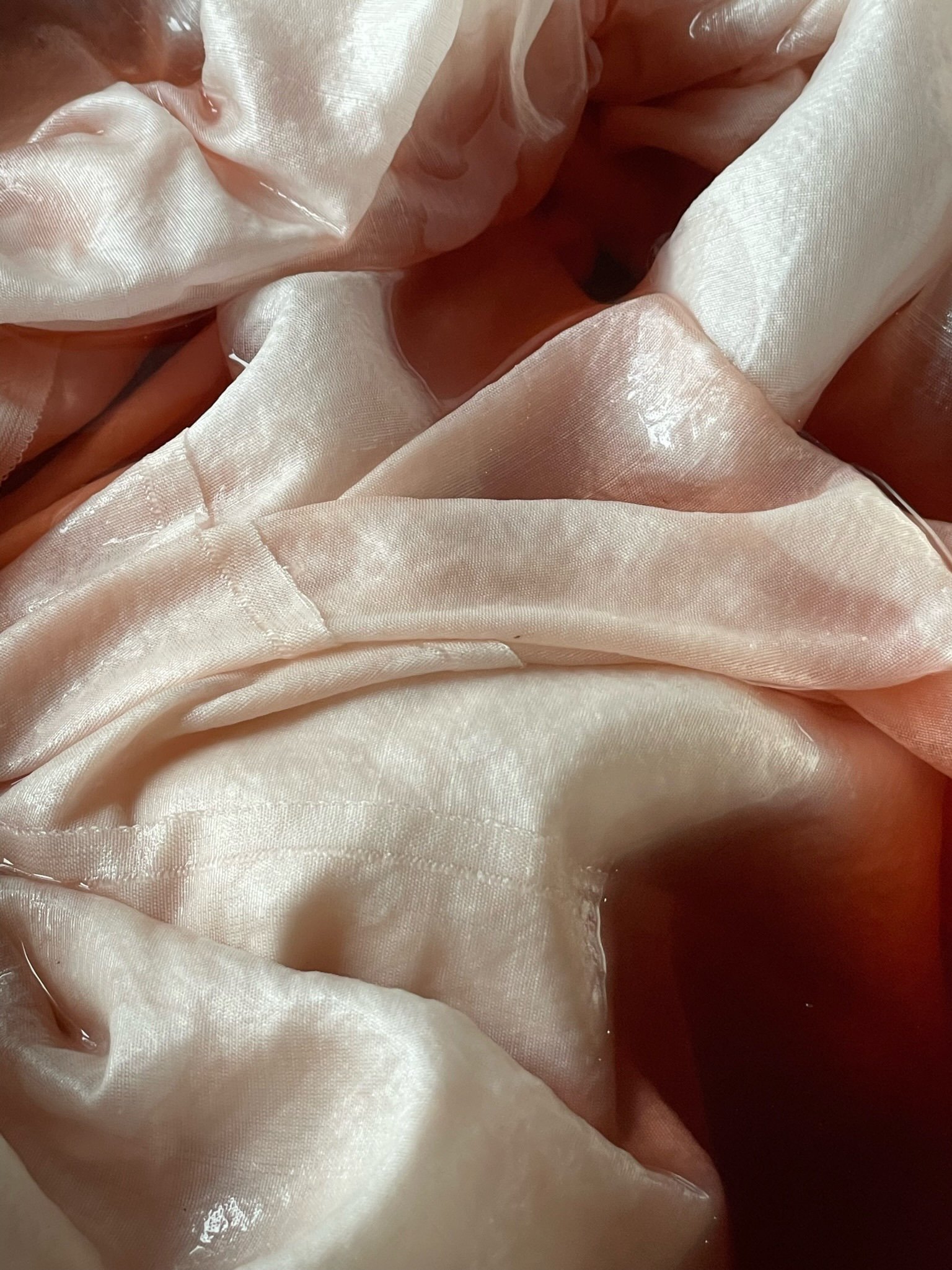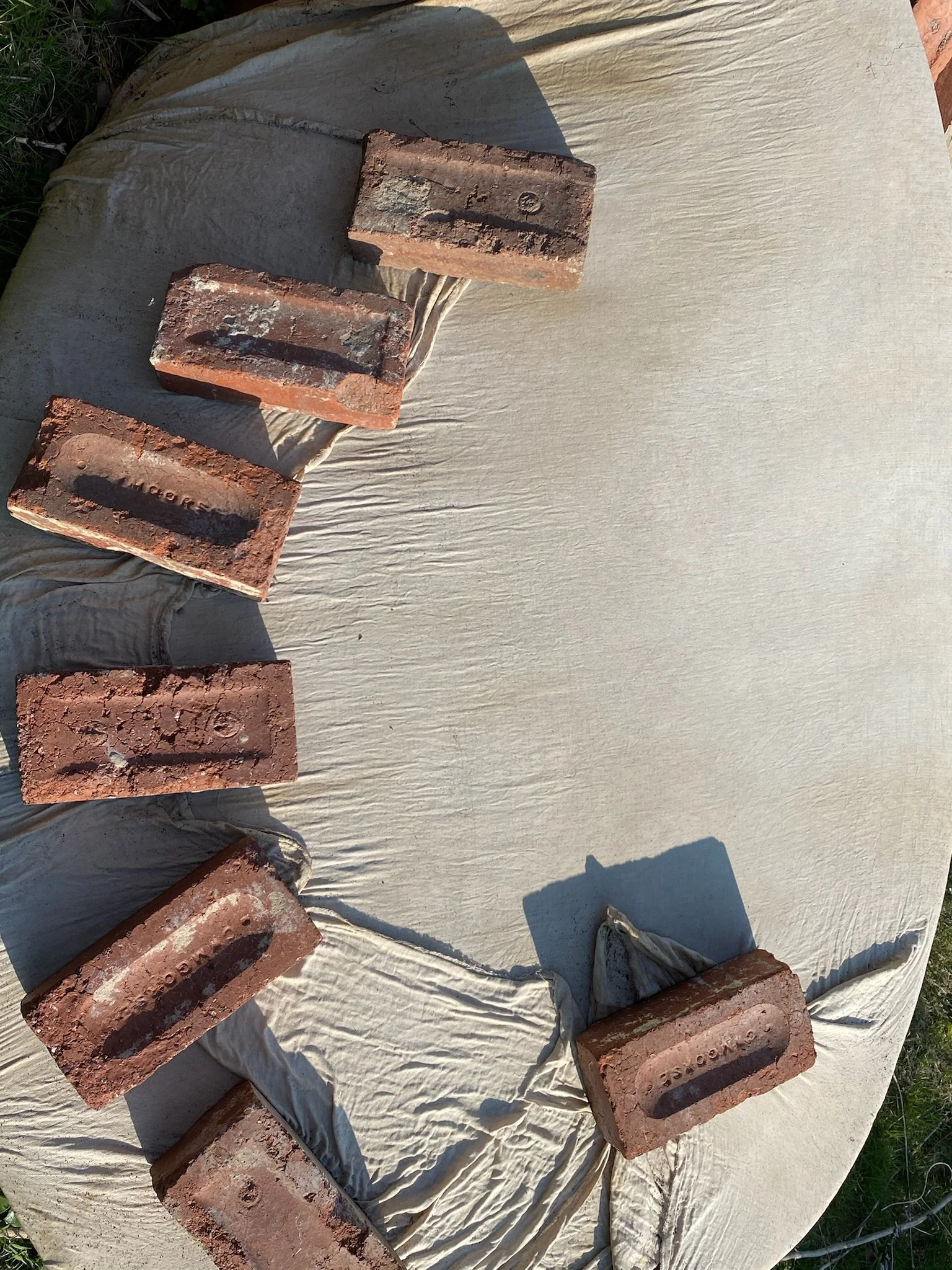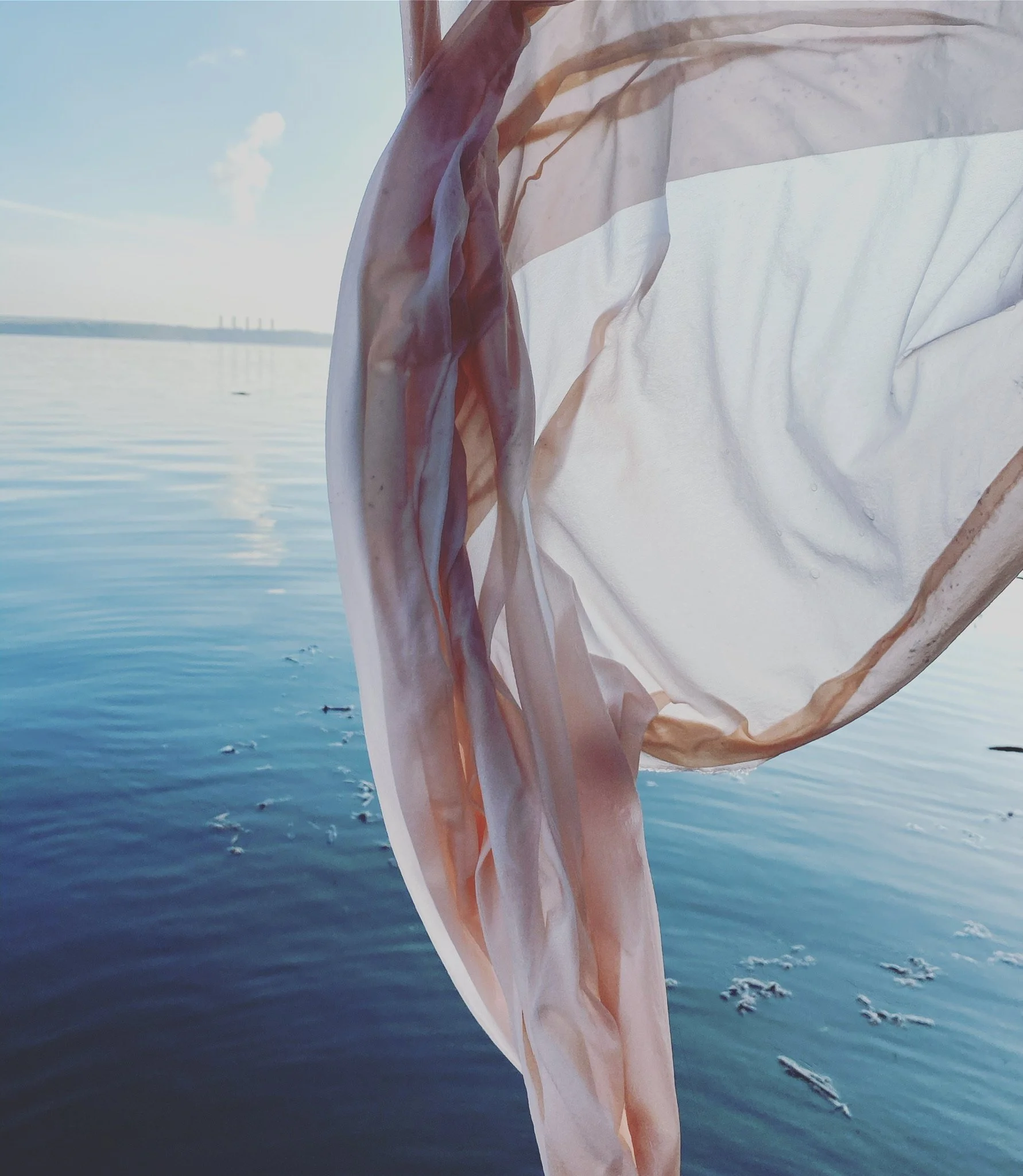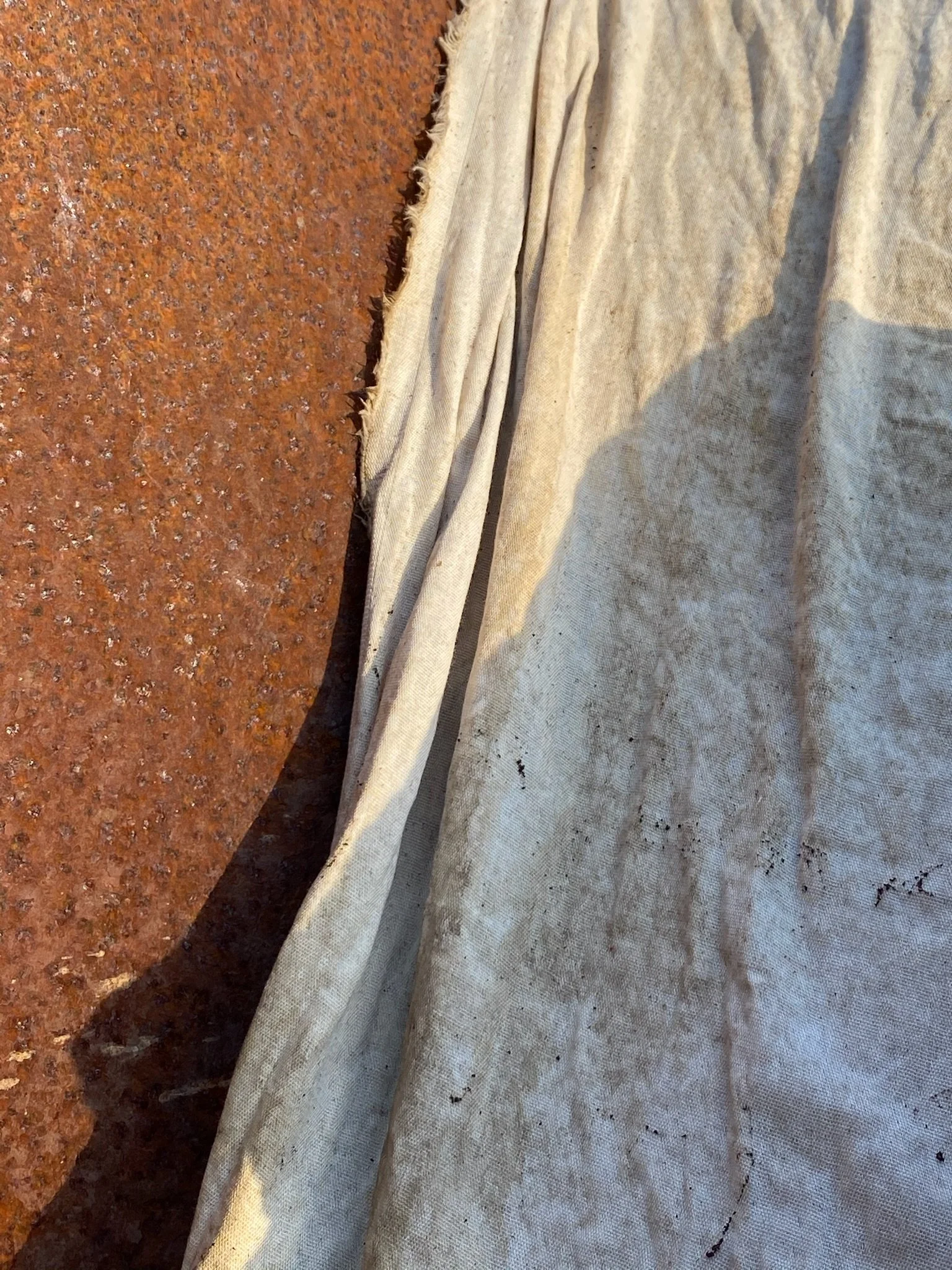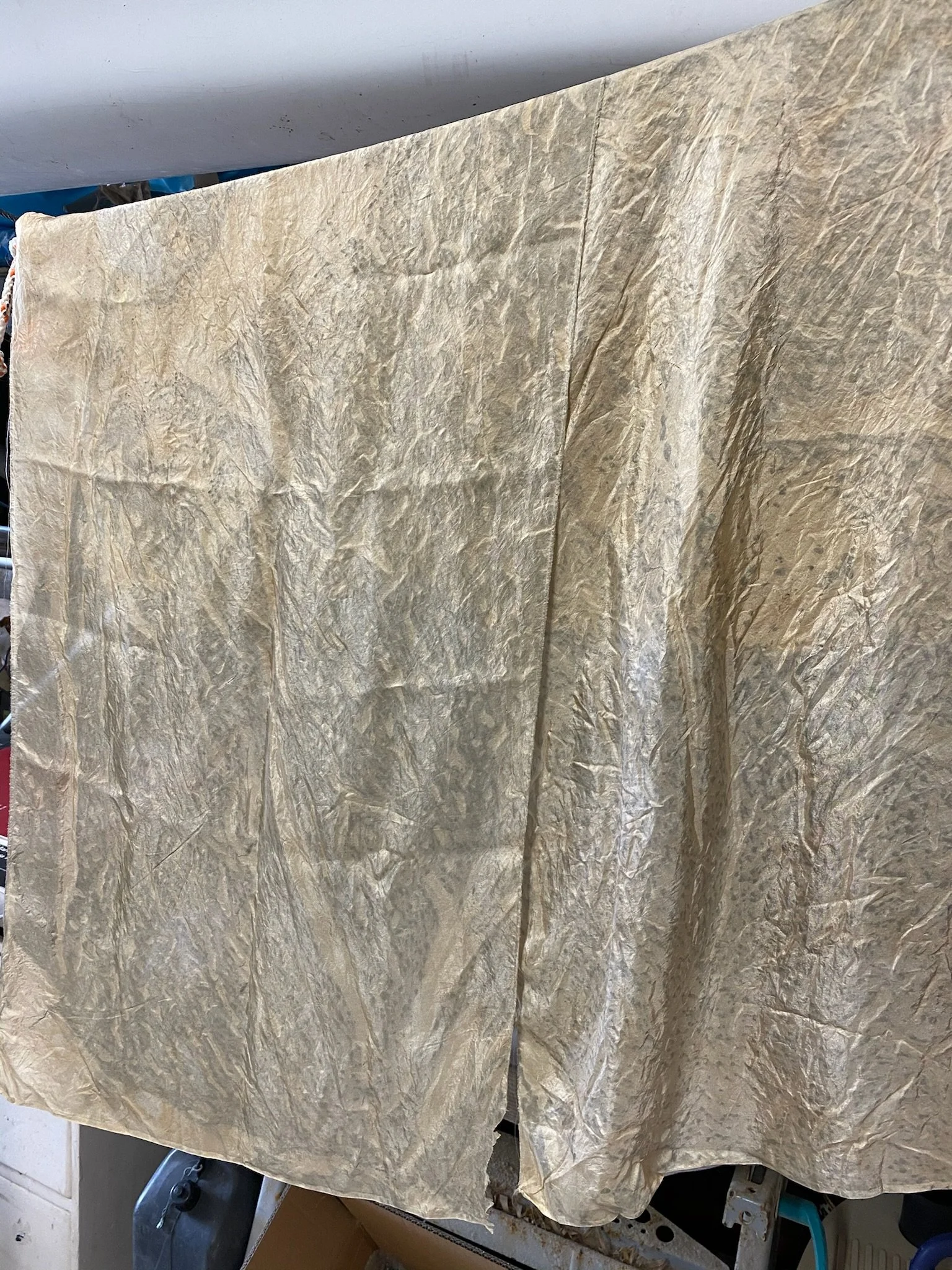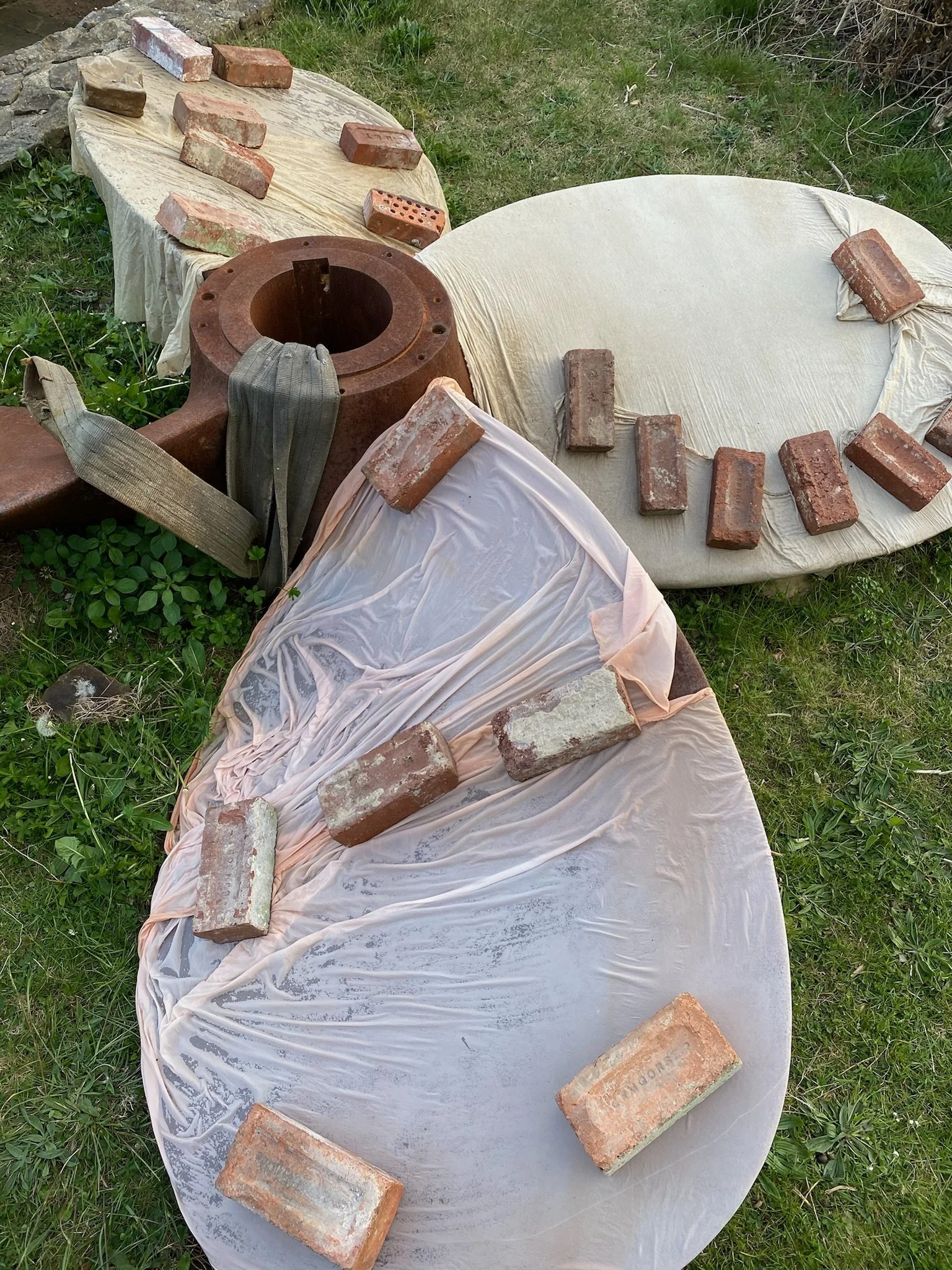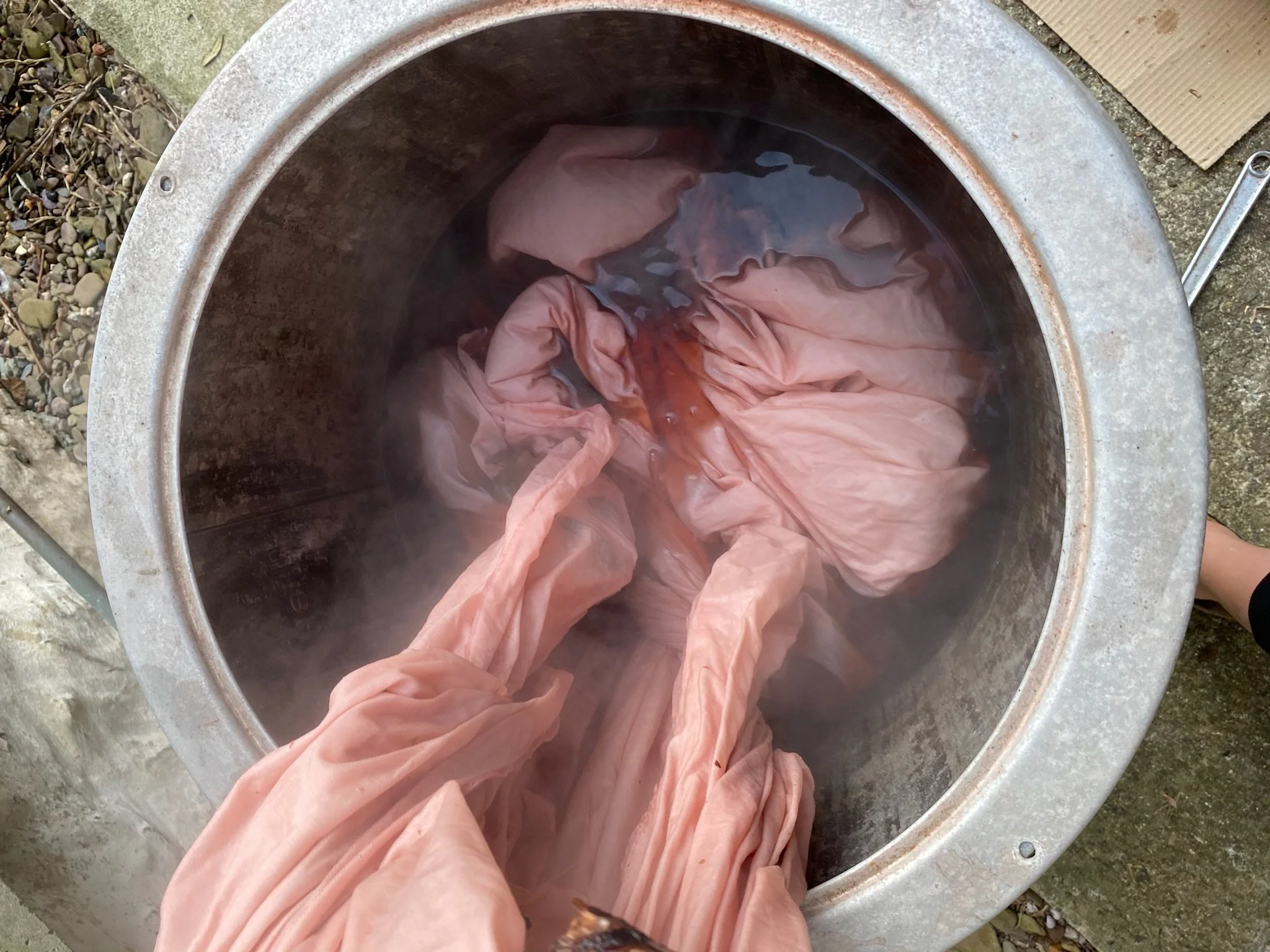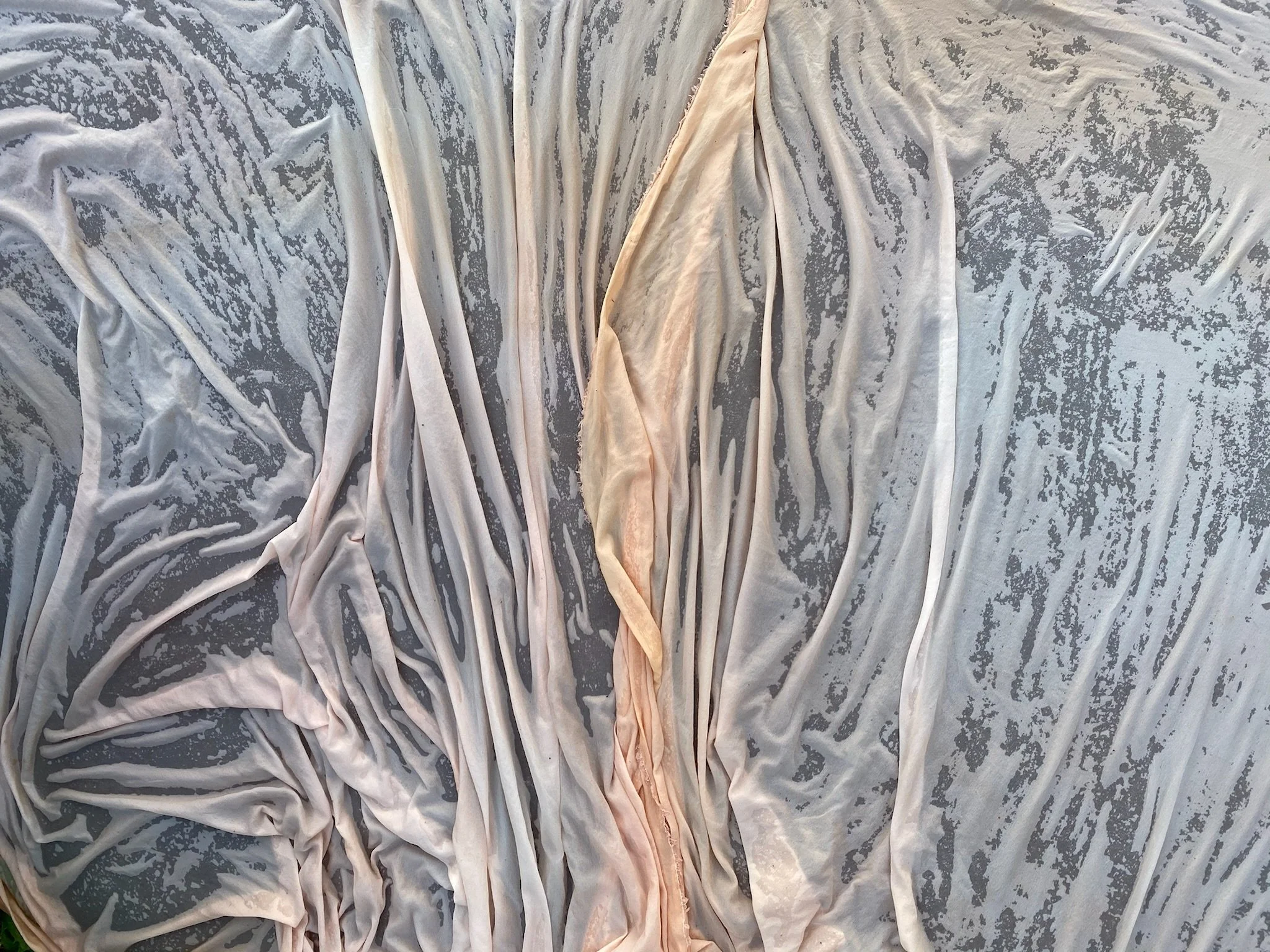
ORGANIC PEACE SILK
HANDMADE
with natural dye
Antonia Claudie is committed to changing the textile industry, devoted to craftsmanship, prioritising quality over quantity. Through sustainable practices and ethically sourced materials, the effect is always beautiful and long-lasting designs.
Antonia Claudie focuses on a circular design process, using natural materials and dyes, lessening the negative impact on the planet. The brand stands for a no waste policy with only made to order pieces, avoiding overproduction. Any material offcuts are turned into accessories or art pieces.
UNIQUE AND BESPOKE
A reaction between rust, natural dye and silk creates unique patterns which is an intricate, step-by-step process taking several days.
The dyed silk is wrapped around metal rods and the pattern starts to build onto the silk. No two products are identical and every piece exudes individuality and the finest level of craftsmanship. However the patterns can be controlled by timing the reaction precisely and tightening, loosening the silk around the poles.
This technique was discovered by our founder and uses zero chemicals.
OUR PROCESSES
Created from food waste and plant extracts, the dyeing of the silk is a process in which temperature and acidity levels in the “bath water” as well as stringent timing is all carefully controlled.
We extract the colours from avocado stone and peel, coffee grounds and crushed walnut to mention but a few.
After the dyeing is done, the remaining water can also be used as a fertiliser for garden plants and vegetables as it is full of nutrients .
It is a nontoxic and long-lasting process, with zero chemicals.
“Using natural dye is a repetitive process, requiring a lot of time and effort. Natural dyeing aligns with the most important values within my practice of sustainable design and is a unique element to the brand.”
Antonia
ORGANIC PEACE SILK
Cruelty-free, Vegan-friendly Silk
The peace silk we use is Faitrade and GOTS (Global Organic Textile Standard) certified, farmed sustainably, and free from harmful chemicals and dyes. It includes zero-carbon production and 75% less water consumption than conventional silk, making them a more sustainable, friendly and healthier choice.
Silk is one of the world's most luxurious, strong and durable, natural fibres. It is a renewable resource and 100% biodegradable at the end of its long lifecycle. Meaning, you can then use it for as long as you want and need and years down the line if you choose you can allow it to compost or be used in mulch production instead of just throwing it away
At Antonia Claudie we have a vested interest in promoting greener and more ethical production methods, and we discovered that the process of making conventional silk did not align with these values. Standard silk required the live boiling or stippling of each silkworm used to make the product.
We have chosen to circumvent cruelty by using only Organic Peace Silk, which ensures the completion of the silkworm’s metamorphosis to the moth stage and extracts the silk without harming the creature. Once the butterflies have left their cocoons, the cocoons are processed without the use of harmful chemicals and the fibres are spun using solar-powered machinery. This particular technique requires more time and care during production, but it is fundamental to our philosophy and the ethics of the company, as no animal is negatively impacted for the silk to be produced, making it a favourable silk alternative to the conventional one for those who do not believe in harming animals.
Regenerative Farming and Organic Sericulture
Organic peace silk production is designed to sustain the health of soils, ecosystems and people. It means the trees which provide the feed for the silkworms to grow, are not treated with fungicides, insecticides or genetic sprays; this positively impacts the size of the cocoon and the quality of the silk thread, as well as significantly reducing the water pollution in comparison to conventional silk production practices. It also promotes better and healthier working conditions for the farmers too.
Organic Peace Silk is the alternative for people who care about the sanctity of animal life, the environment and those who appreciate the pinnacle of luxurious silk fibres.
ECO-FRIENDLY DYES
All our fabrics undergo a lengthy natural dying process. By transforming food waste from local restaurants and vendors and botanical materials, into dyes, we help reduce our negative environmental impact.
We only use natural dyeing extracts to dye our silk. The result is beautiful colours that infuses the silk with a unique look. The biodegradable dyes make use of discarded food waste such as coffee waste, onion peel, avocado peel and stone that are naturally all by-products.
We also use natural plant fibres such as madder root, walnut shell, chlorophyll and oak galls to mention a few. These pure plant extracts comes directly from trees and plants and are harmless to the environment. They are extremely strong and the colours can last op to a 100 years. Natural dyes have existed for centuries dating back to Mesopotamia, and Ancient Egypt.
Antonia Claudie was born out of a desire to reject the synthetic dyes that are disturbing and polluting our environment. Modern synthetic dyes can ‘impair photosynthesis, inhibit plant growth, enter the food chain… and promote toxicity’. The textile industry contributes significantly to pollution from dyes with about ‘12-15% being released during the dying process’.
Antonia Claudie began by embracing all-natural dyes made out of food waste and botanical materials. This means that all the water we use to dye our products can safely be returned to the environment, being used to water flora in our local space. By returning the water used in the dying process we actually benefit the environment, our use of all-natural dyes often contains elements to benefit our environment, coffee grounds for example are rich in nutrients, particularly nitrogen, potassium and phosphorus. Our natural dyes are just as effective as synthetic dyes but replace all the pollutants with additional nutrients.
(Source: ‘Biotechnology Research and Innovation’ Volume 3, Issue 2, 2019, Pages 275-290
Bruno Lellis, Cíntia Zani Fávaro-Polonio, João Alencar Pamphile
‘Textile dyeing effluents and its impact on the environment’ By Habiba Akter Baly, Textile Today, 2022r)
HOW IT STARTED
In her final year at Saint Martins Antonia stayed with one of her University friends on the Coast of Wales during lockdown.
Falling in Love with the rugged beauty of Pembrokeshire and with only her surroundings to work on her end of year artwork she started experimenting with various natural dyes from plant extracts and food wastes. Exploring the area, she discovered that rust found on an old boat wreck propeller could chemically but harmlessly affect the natural dyes on the various fabrics she was working on, creating beautiful patterns.
The idea of combining natural dyes and rust and building a sustainable printing technique was born.
